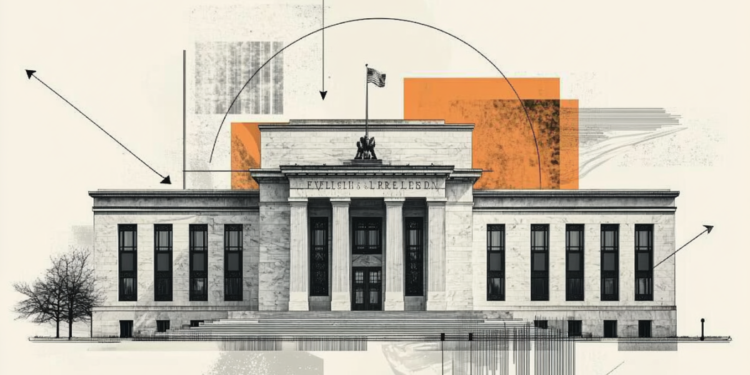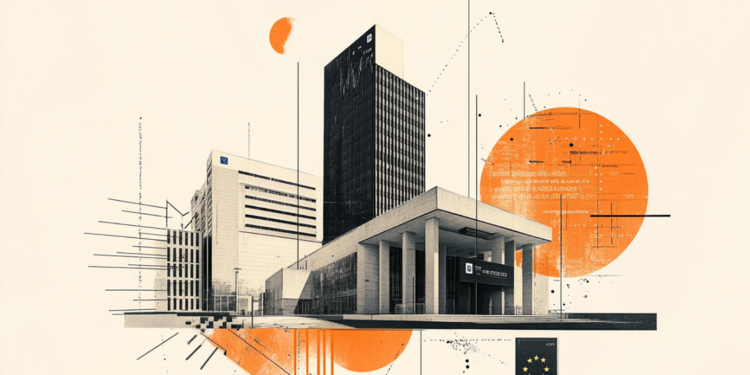“Rail Force One” was the overnight train that took US President Joe Biden on a diplomatic odyssey from Przemyśl Główny, Poland, to Kiev for his historic visit to Ukraine, just before the first anniversary of the Russian invasion. to the country.
The 10-hour night journey was a top-secret, high-security challenge for Ukrzaliznytsia, or Ukrainian Railways – the state-owned operator of Ukraine’s rail network.
With commercial air links to Ukraine canceled and the skies too dangerous to fly politicians in and out of the country, the rail network has become the country’s diplomatic highway. More than 200 foreign diplomatic missions have arrived in the country by train so far.
World leaders including Canadian Justin Trudeau, Briton Rishi Sunak, Frenchman Emmanuel Macron and Italian Giorgia Meloni took the train to Kiev.
Ukraine’s President Volodymyr Zelensky is a regular user of the rail network on his diplomatic missions abroad.
But there’s more to railroads than “Rail Force One,” as Biden’s train was dubbed. The US president’s high-profile trip highlighted Ukraine’s vast rail network, which at more than 24,000 kilometers is the 12th longest in the world.
Ukrzaliznytsia is the world’s sixth largest rail passenger and seventh freight carrier, first built in pre-Soviet times.
While Ukraine’s forces destroyed cross-border links with Russia, the rail network still connects with other countries – although the different gauges mean trains generally cannot cross the border. To deal with this, last year, sections of previously defunct lines to neighboring countries including Moldova, Poland and Romania were rebuilt.
It’s not just about making travel easier for passengers. It’s crucial for shipping – and for much of the world, which depends on Ukrainian production, including grain.
In 2022, 28.9 million tons of grain were transported by rail, most of which was exported. In total, just under 60 million tons of goods were exported from Ukraine, according to Ukrzaliznytsia. In total, the company carried 17.1 million passengers on long-distance trains in 2022.
“Before the war, we had planes, cars, buses and trains,” Ukrzaliznytsia CEO Alexander Kamyshin told the CNN . “Now we have trains and cars, not planes. And we are a big country. Therefore, to get from Kiev to the west, south or east of Ukraine, night trains are the best way to do this. You get on the train late at night, travel all night, and in the morning you’re in the city you need to be. So you don’t waste time. It was comfortable before the war, and now it is comfortable and safe. Trains are very important.”
Most of the pictures we saw last year of Ukrainian railways are of refugees. Ukrzaliznytsia says it helped four million stay safe in 2022, a quarter of whom were children.
Some trains were also reconfigured as medical facilities. About 2,500 civilians were evacuated for medical treatment via rail last year. The network also carried around 336,000 tonnes of humanitarian aid.
It’s a huge responsibility for Kamyshin, who started working at the company six months before the invasion of Russia.
“I joined the problem of developing the company, giving the green light to new projects, renewing the fleet and it was all about building and building, and acquiring new things. But a year ago we had to switch to wartime and war rails,” he says.
Trains that run on time
Perhaps the most extraordinary part of Biden’s journey to Ukraine has been the light it has shed on the ease with which Ukrzaliznytsia operates.
Kamyshin apologized in a tweet, because of Biden’s complex journey, “only 90% of our trains ran on time yesterday.” That drew hollow chuckles from Biden, where Amtrak is famous for its late-running passenger trains.
Amtrak’s latest on-time performance figures, looking to June 2022, show that, on average, just over 22% of trains ran on time in the US. Some areas reversed Ukraine’s statistics, with more than 90% of trains arriving late.
In the UK – which has sent two prime ministers to Ukraine by train – just 67.7% of trains run on time, according to the latest data. This comes as no surprise to Ukrainians. Rail services have always been excellent, says Kiev resident Alla Penalba.
“I always take the train when traveling in Ukraine,” she says. “It’s convenient – you board at night and in the morning you’re on the other side of the country. Even before 2014 [quando a Rússia invadiu a Crimeia] the journey from Kiev to Crimea was most convenient by train. It took 20 hours, but you sat up and then went to sleep – it was really comfortable.”
Penalba says that because low-cost airlines entered Ukraine later than the rest of Europe, the country has maintained its overnight train network, with limited domestic flights.
“I could fly from Kiev to Odesa, but I would still think, OK, I need to go to the airport two hours early, if you live on the opposite side of Kiev, it might take an hour to get there – so it’s three hours plus the flight . Ultimately, it is more convenient to take the train at 11pm, sleep and arrive at 7am.”
Better than your neighbors
Penalba left Kiev with her family on the second day of the 2022 invasion, driving to France, where her husband is from. However, she returned alone in the summer to take care of personal matters and see if it was safe for her to return.
On her way to Ukraine, she took a flight to Poland and then a bus to Kiev: “A terrible experience, I hate long bus journeys”. On the way back, she took the night train to Poland: “It was the best experience in two days of travel”.
When the family returned to Kiev in August 2022, they again took the train from Poland, getting a second-class compartment with four beds for her, her husband and their two children. Your only stress? The Polish train was three hours late. Unlike Ukrainian.
‘Better than Germany’s railways’
Visitors to the country are equally amazed – starting with Penalba’s husband, who moved from France in 2015.
“He is always saying that Ukrainian trains are very good compared to France,” she says. “He didn’t use trains there because they were too expensive. Here they are accessible to everyone.”
A cross-border train to Poland costs around 50 euros (about $53) for a reclining bed in a second-class berth for four, and Penalba says domestic routes are even cheaper — around 15 to 30 euros .
Koen Berghuis, editor-in-chief of train travel site Paliparan, is another fan. Based in Romania, the Dutchman makes about half a dozen long-distance or night trains a month and, before the war, traveled to Ukraine more than 10 times.
For him, comparing punctuality, Ukraine’s rail system is “better than Germany’s”.
“They’re doing a remarkable job – even now, the trains are running more or less on schedule,” he says.
Surprisingly, Penalba reckons that the system has become “more efficient” since the Russian invasion.
Diplomatic requests in carriages
Politicians don’t travel third class. Kamyshin does not reveal details about the service they receive, but says that “iron diplomacy guests”, as he calls them, “generally spend more time on the train than in the city”.
“That’s why how we treat them is really important, he says.”
But it’s not just about treating them well. Trains also convey “the messages we would like to send them,” she says.
“We are sensitive and will always treat all of our guests properly, but these things help them understand what we expect from them – like iris flowers or leopard print clothing.”
A vase of irises was placed on the train for the visit of German Chancellor Olaf Scholtz, who recently agreed to supply an air defense system called Iris-T. For another politician, the team wore leopard print accessories, in homage to Leopard-2 tanks. Kamyshin does not say who did it, but Poland and Germany also donated Leopard-2 tanks.
Rail as a lifeline
Train travel in Europe has always been popular, of course, and the climate crisis is making it more and more popular. Berghuis thinks Ukraine can teach other rail networks a few things.
“The main difference to other European countries is the scale of Ukraine as a country,” he says.
Early last year, he took the Rakhiv-Mariupol overnight train – the longest passenger train route in Ukraine before the Russian invasion. At 1,806 kilometers, it took just under 29 hours, crossing 12 regions.
“It was basically the same as Amsterdam to Lisbon or Athens, or New York to Kansas City,” he says.
Ukraine’s size means that its “huge” rail network “has always been a lifeline for Ukrainians – and it’s a very important piece of infrastructure,” he says.
That’s why the Ukrainians are springing into action if any lines are damaged during combat. When the southern city of Kherson was liberated, trains re-entered the city just eight days later.
“It’s very important to them, to keep the country together, so that people can visit family and friends, for shipping and for the postal network. They use trains to deliver some pensions.
“It’s also for public relations, because everything is public relations in a war – they’re showing Russia, ‘Hey, even under these circumstances, we can run trains. Even if there is no electricity, it doesn’t matter, we can use diesel or steam locomotives.’ But the rail network is also a lifeline in many more ways than we can imagine.”
While Europe is experiencing a night train “renaissance” right now, Berghuis says Ukraine is a great example of how to run a night train network.
There are usually three classes for a sleeper, he says, with each carriage having its own attendant. They are there to provide passengers with bedding, take orders for snacks and tea, and make sure passengers get on and off at the right stations. But they’re also there for safety – especially important when you’re sleeping in an open cabin with 50 berths.
Yes, 50 or so – that’s what you get in the third-class carriages, which are essentially carriages with bunk beds that act as seats during the daytime portion of the journey.
“The attendants keep an eye on everyone in their car – they take pride in what they do,” says Berghuis. Not that they really need it. He says the third-class carriages are “part of the fun, with people happy to share food, stories, experience and conversation – even if it’s with gestures”.
Second class offers space in a four-bed couchette, while first class is more sophisticated.
The stations are also worth a visit, says Berghuis, who singles out Kiev and Lviv as two of Europe’s most beautiful historic stations and loves Odesa for its “seaside holiday vibe.”
Source: CNN Brasil
Bruce Belcher is a seasoned author with over 5 years of experience in world news. He writes for online news websites and provides in-depth analysis on the world stock market. Bruce is known for his insightful perspectives and commitment to keeping the public informed.







